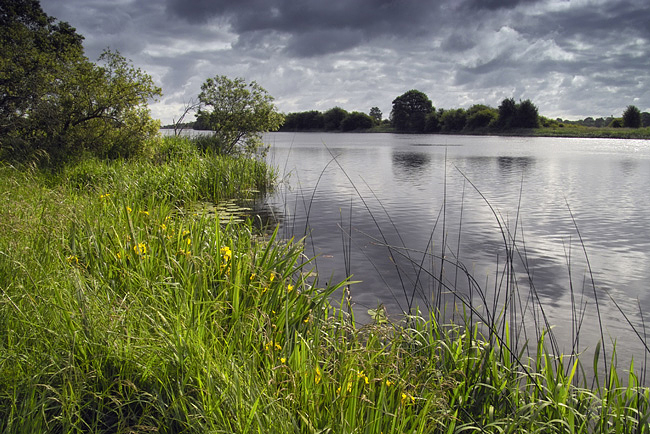
When I decided to make the digital switch, I was rather reluctant. Digital SLRs were still in their infancy and were just about to become competitive to high quality transparency film like the Fuji Velvia. When I read about the Foveon sensor my heart skipped a beat. Bayer sensors (named after its inventor Bryce Bayer) have been (and still are) the standard, however they can record only one color, red, green or blue, on each pixel site, while the other two colors are interpolated. This means only one color in each pixel is original, the other two are guesswork by the camera’s computer.

While the Bayer design holds only one layer of sensor sites, the Foveon sensor has 3 layers similar to traditional film. The Foveon design is based on a feature unique to silicon: The different wavelengths of light – red, green and blue – penetrate silicon to different depths so the Foveon designers stacked the sensors for red, green and blue and embedded them in silicon. As a result, the Foveon sensor can record all 3 colors at each sensor site or pixel which in theory should result in more accurate colors and sharper images, because Foveon doesn’t need an anti-aliasing filter.
The first camera featuring this sensor was the Sigma SD9 which was launched in 2002 and it caused quite the confusion. Canon had 6MP DSLR cameras at the market around that time, the Canon D60 and Canon 10D, and was market leader in terms of sensor resolution. Along came Sigma/Foveon and claimed the SD9 which boosted a 9MP sensor (3MP in each layer). The truth, as always, lay somewhere in the middle. The Canon cameras put out larger image files than the Sigma, but were very limited if you wanted to do further enlargement. The Sigma files, however, could easily be enlarged to 400% and more without any significant loss of quality.

REWIND: An Interesting New Look Inside Sigma’s Aizu, Japan Factory
Unfortunately, the Sigma/Foveon cameras at the time (SD9 and SD10) had one big Achilles heel: Noise and other strange artifacts. Long exposures (over 2 seconds) and high ISO (over 200) were pretty much unusable due to strong noise. There was also a phenomenon that showed artifacts in vast areas of blue skies and became known as ‘blue sky blobs.’ These problems were a result of the basic design of the sensor. Under the right conditions, the Sigma SD9 and Sigma SD10 produced truly outstanding images, but unfortunately the number of these conditions were rather limited. This became a major hindrance for me and I jumped ship when Canon came out with the original Canon EOS 5D in 2005.
Sigma/Foveon kept rather quiet and only announced a successor to the 2003 model, the SD10, in 2006. The Sigma SD14 featured a higher resolution sensor, but showed similar problems to its predecessors. The SD14 was followed by the SD15 in 2010 (although it was already announced in 2008), and also in 2010 Sigma announced the SD1, a flagship camera with a new 4800x3200x3 sensor aimed at the professional market. Unfortunately, this camera made the headlines for all the wrong reasons. It was launched with a hefty price tag (similar to the Canon 1Ds Mark III and Nikon D3X) that only came down after a change at Sigma’s executive level.

The newest additions to the Sigma – Foveon relationship (Sigma bought the Foveon company in 2008) are the DP compact cameras and their recently announced successors the Sigma Quattro series cameras.
REWIND: Sigma Quattro: New Sensor, New Design… New Camera
The Sigma Quattro cameras feature a completely new sensor design that should eliminate the noise problem of the older Foveon design. If the theory works out, Sigma/Foveon could be on the way of revolutionizing sensor design. A sensor that captures full color information in each pixel, but also displays low noise at long exposures and high ISO is something many photographers would be happy about. Imagine a sensor like that paired with Sigma’s new series of lenses. That would be a game changer. I definitely will be watching Sigma more closely again.
What are your thoughts on the new Sigma Quattro and the changes they’ve made?
CREDITS: All photographs by Carsten Krieger are copyrighted and have been used with permission for SLR Lounge. Do not copy, modify or re-post this article or images without express permission from SLR Lounge and the artist.





Get Connected!